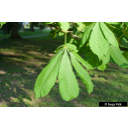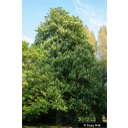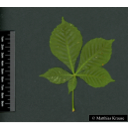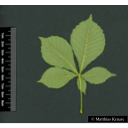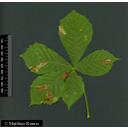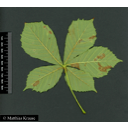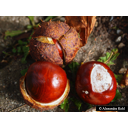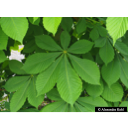Useful information about the taxon (species, subspecies, variety...)
Aesculus hippocastanum L. 1753
Sapindaceae
(APG IV)horse chestnut
Akzessionnummer: EG-L-008-20589
Pflanzjahr: 0
Taxon concept: The Plant List (2014), version 1.1
Distribution: Europe: Balkan Peninsula; North Iran, Himalaya; naturalised in France and Benelux states, Ireland, Central and eastern Central Europe
Aesculus hippocastanum L. - Accepted: Aesculus hippocastanum L. bei Zander 2008; Familie: Hippocastanaceae (Zander 2008)Aesculus hippocastanum L. - Accepted: Aesculus hippocastanum L. bei The Plant List (2010); Familie: Sapindaceae (APG III)Aesculus hippocastanum L. - Accepted: Aesculus hippocastanum L. bei The Plant List (2014), version 1.1; Familie: Sapindaceae (APG III)Aesculus hippocastanum L. - Accepted: Aesculus hippocastanum L. bei The Plant List (2010); Familie: Sapindaceae (APG IV)Aesculus hippocastanum L. - Accepted: Aesculus hippocastanum L. bei Schmeil-Fitschen 2019; Familie: Sapindaceae (APG IV)Aesculus hippocastanum L. - Accepted: Aesculus hippocastanum L. bei BfN Checklist Flora DE; Familie: Sapindaceae (APG IV)Aesculus hippocastanum L. - Accepted: Aesculus hippocastanum L. bei World Flora Online - APG IV (Angiosperms); Familie: Sapindaceae (World Flora Online - APG IV (Angiosperms))
- Color of flower
- white
- Life form
- woody, tree
- Foliage persistence
- deciduous
- Soil conditions
- on mesic, nutrient-rich and deep, cohesive sand or loam soils
- Light conditions
- partial shade to full sun
- Natural occurrence (habitat)
- Balkan ravine forests
- Comment to ecology
- bumblebee plant
- Vegetation typ and synecology (plant community)
- in the community Stellario-Inetum, also in noble hardwood forests on gravel slopes
- Constraints according soil conditions
- salt tender
- Constraints according radiation (light)
- sensitive to radiation
- Constraints according habitat
- sensitive to air pollution
- Safety advice
- immature fruits and green husks are toxic
Erhardt, W., Götz, E., Bödeker, N. & Seybold, S. (2008): Der große Zander. Enzyklopädie der Pflanzennamen. Band 2. Arten und Sorten. Eugen Ulmer KG, Stuttgart (Hohenheim), 18. Aufl., 2103 S.; Haider, M. et al. (2005): Wildbienenkataster. See: https://www.wildbienen-kataster.de; Kämper, Wiebke et al. (2018): Flower visitation honeybee and bumblebee. See: https://www.bexis.uni-jena.de/ddm/data/Showdata/16086?version=2; Karl Hiller et al. (2010): Lexikon der Arzneipflanzen und Drogen.. Spektrum, Heidelberg, 2. Auflage 9783827420534.; Kew Gardens and Collaborators (2017): Plants of the World Online. see: plantsoftheworldonline.org.; Parolly, G. et al. (2019): Schmeil-Fitschen: Die Flora Deutschlands und angrenzender Länder.. Quelle & Meyer Verlag, Wiebelsheim, 97. Aufl.; Pritsch, Günter et al. (1985): Bienenweide.. Neumann-Neudamm, Melsungen; Pritsch, Günter et al. (2007): 200 Trachtpflanzen erkennen und bewerten.. Kosmos, Stuttgart; Schick, B. & Spürgin, A. (1997): Die Bienenweide. Eugen Ulmer Verlag, Stuttgart, Auflage: 4., völlig neubearb. u. erw. A., 216 S. 978-3800174188.; Werle, Susanne et al. (2015): ITS2 DNA metabarcoding of wild bee pollen loads, collected in 2020 and 2021 across all three exploratories. See: https://www.bexis.uni-jena.de/ddm/data/Showdata/31545?version=6; Westrich, P. et al. (2018): Die Wildbienen Deutschlands.. Ulmer Verlag ISBN 978-8186-0123-2.;
Diese Webseite verwendet Google Maps, um Karten und Standorte von Pflanzen in den Hohenheimer Gärten anzuzeigen. Dadurch werden unter Umständen Daten an Google weitergeleitet, was mit einer Verarbeitung Ihrer personenbezogenen Daten verbunden sein kann. Die Datenschutzerklärung von Google finden Sie hier: Datenschutzerklärung von Google

